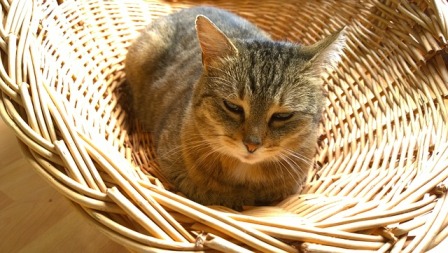Home Care for Cats With Diabetes
Home Care for Cats With Diabetes
To provide a diabetic cat with proper care, we need to understand diabetes at first. Diabetes mellitus is the second endocrine disease that frequently attacks older cats. It also affects more male cats than females. However, the most risky group of cats for developing diabetes are overweight cats, which number is on the rise because obesity becomes a growing issue in the Western world. Diabetes occurs when the body fails to produce enough insulin, a hormone that regulates the quantity of glucose in a cat’s blood. Many cats with diabetes can suddenly lose weight and start eating more food. This happens because their body cannot generate insulin of proper quantity or quality and tries to gain more energy directly from food. As a result, they start losing weight, in spite of the increased amount of food intake, while the level of sugar jumps. On the other hand, body throws away excessive sugar through urine, therefore causing more urinating and more thirst in cats. For that reason, it is not surprising fact that the four main symptoms that point out at diabetes in cats are: weight loss, huge appetite, excessive urinating, and excessive thirst. If a cat is diagnosed with diabetes, it is essential to treat the illness on time and many owners usually decide to provide the affected cat with proper home care. To learn more about home care for cats with diabetes, the article “How Do I Look after a Diabetic Feline Once She Is at Home?” gives us two basic options.
Home Care for Cats With Diabetes
Home Care Scenario 1
If yours is one of the diabetic cats who can accommodate the following regimen, then treatment may only require a lifestyle change (tell that to a dieting cat!) and a temporary hiccough in the usual routine.
Key features will be:
• change of diet (especially to a ready-made feline diabetes diet from one of the food manufacturers)
• loss of excess poundage
• resolution of a problem which precipitated this diabetic episode,
• a custom-made protocol for management of diabetes, specifically for your felineHome Care Scenario 2
If your cat is one of the 50% – 85% who need insulin to be administered, then a whole new world of clinical finesse and intimacy with your cat will arise.
You will have to accept that:
• your cat’s food and water requirements will need monitoring
• occasional access to unadulterated (i.e. litter-free) urine is invaluable
• you or someone else will have to give the cat a tiny amount of insulin using a very fine needle and syringe twice a day, at the same times, 12 hours apart,
every day.
To ensure proper home care for a cat with diabetes, veterinarians suggest keeping a diary of everyday routine, treatment and diet. They recommend taking notes of the amount and time of insulin injection. It is especially important because an overdose of insulin can cause hypoglycemia in cats. If hypoglycemia or low blood sugar goes unnoticed, it can lead to potentially fatal consequences. Veterinarians also recommend keeping notes of the cat’s body weight, diet and behavior. Mood swing and water intake are also at the top of the list. Any unusual symptoms, such as vomiting or diarrhea, should be written down in the diary. If written regularly, this diary can be of significant help to a vet in treating diabetic cat successfully.










